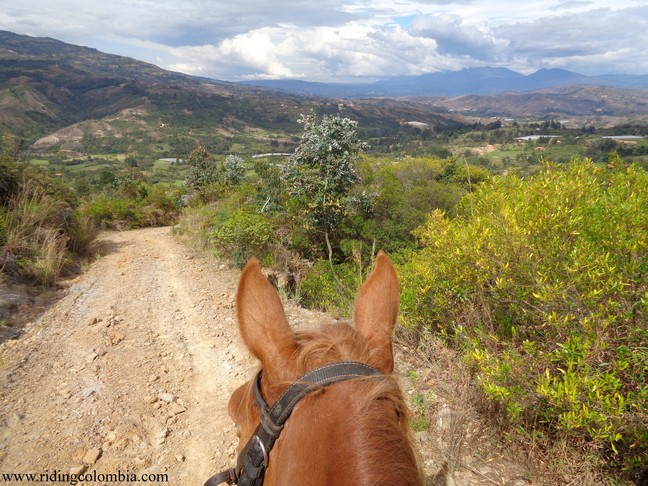
The purpose of this article is to show broadly the difference between the Colombian creole (native) horse (called “criollo”) and European-North American horse, and the reasons why the Colombian creole horse is different and softer. While in Europe and North America there are many different breeds of horses, like the English thoroughbred stallion or the Pure Spanish horse (Andalusian), for the purpose of this article will generalize all those breeds on one race. We do not include in this category the United State gaited horses.
The height of a horse is measured as the height at its back (exactly the cross). The Colombian creole horse is lower (1.4m) and thin. Therefore, the greater height and robustness of European-USA horse makes your movements (gaits) feel stronger for the rider.
Globally, the gaits of the majority of the horses are:
- Pace
- Trot
- Gallop
The Colombian creole horses have two additional gaits:
- “La Trocha”.
- The Colombian “Paso Fino”.
The "Trocha" gait
“La Trocha”: It is a very smooth gait for the rider and can achieve good speed. It is the preferred gait for long rides. The spanish word “trocha” is roughly translated to mean “a narrow path through the brush or a trail.
You can look up in Youtube “trocha” to see how is the gait movement. We had to remove the video for copyright.
The trot and gallop (canter) colombian gait
On many Colombian creole horses, his trot is softer than the European horse. So, the rider is able to sit the trot confortable with very little jarring and does not need to post.
The canter (short gallop) on the colombian creole horse is softer than in Europe and North America because the horse does not maintain his 4 legs on the air at the same time. It has one leg in contact with the ground all the time. In other words,” Because of the compact size and conformation of the “Trocha y Galope horse”, there is less of a sweeping sensation when riding the galope or canter. It is a shorter, quicker motion in the saddle for the rider”.
There is a very interesting article about the Colombian creole horse in English written by Rebeca Vail Anderson. This is the link: The Colombian creole horse
It is important to clarify that the creole horses shown in these videos are trained for exhibition or competition and they are not for rent. Therefore, tourists who will ride with Ridingcolombia, will ride creole horses without the same training, or elegance and posture but their gaits will be similar.
conclusion
Due to the softest movements of the Colombian creole horse, the rider would get tired less during the horse rides with Ridingcolombia that if it was doing them with a horse of European-USA origin.
